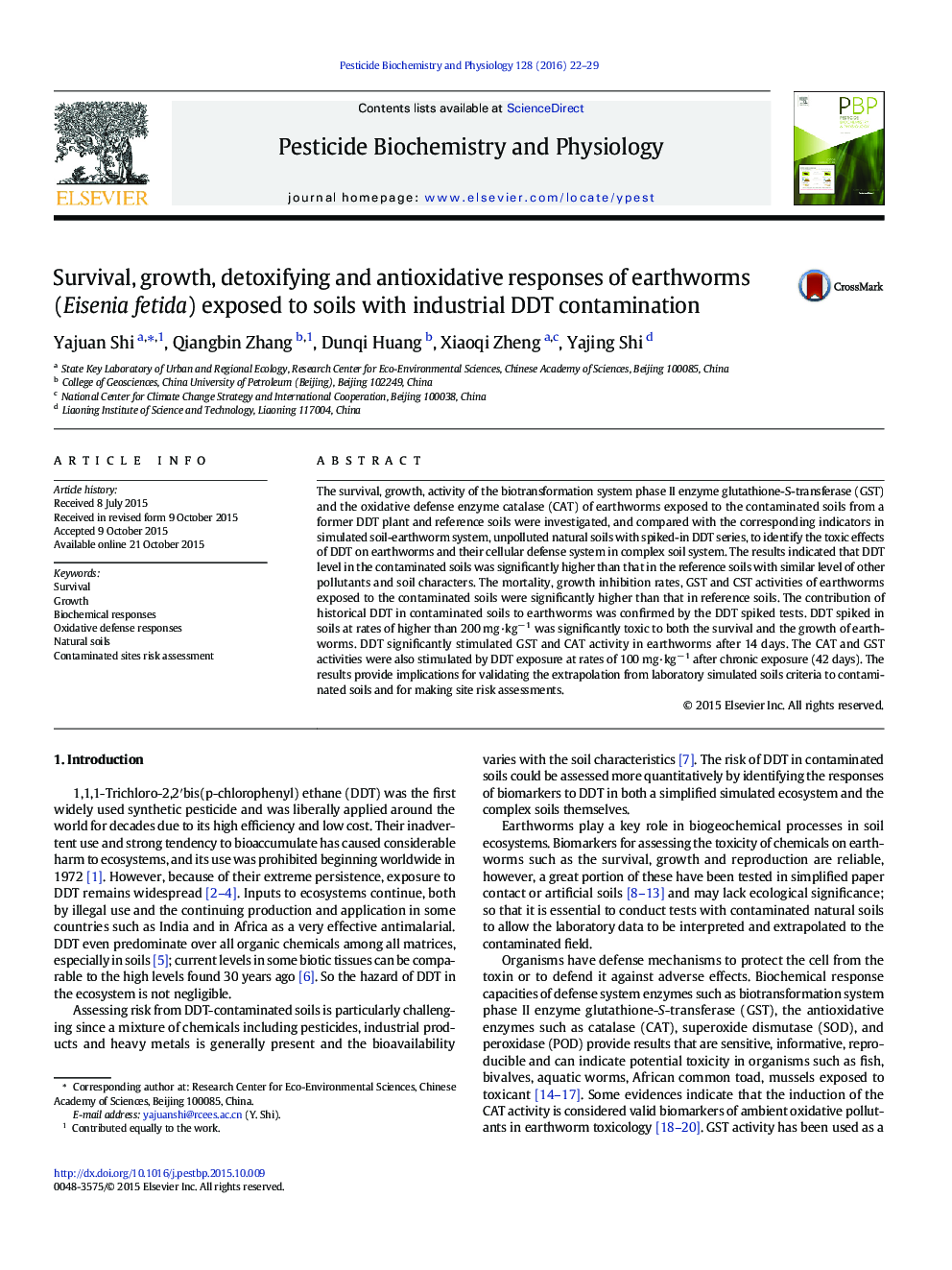| کد مقاله | کد نشریه | سال انتشار | مقاله انگلیسی | نسخه تمام متن |
|---|---|---|---|---|
| 2008983 | 1541771 | 2016 | 8 صفحه PDF | دانلود رایگان |

• DDT was toxic to both the survival and growth of worms in historically polluted soils.
• GST and CAT activities in worms in polluted soils were higher than reference ones.
• DDTs spiked in natural soils were toxic to both the survival and growth of worms.
• DDT significantly stimulated GST and CAT activity in worms in the DDT spiked tests.
The survival, growth, activity of the biotransformation system phase II enzyme glutathione-S-transferase (GST) and the oxidative defense enzyme catalase (CAT) of earthworms exposed to the contaminated soils from a former DDT plant and reference soils were investigated, and compared with the corresponding indicators in simulated soil-earthworm system, unpolluted natural soils with spiked-in DDT series, to identify the toxic effects of DDT on earthworms and their cellular defense system in complex soil system. The results indicated that DDT level in the contaminated soils was significantly higher than that in the reference soils with similar level of other pollutants and soil characters. The mortality, growth inhibition rates, GST and CST activities of earthworms exposed to the contaminated soils were significantly higher than that in reference soils. The contribution of historical DDT in contaminated soils to earthworms was confirmed by the DDT spiked tests. DDT spiked in soils at rates of higher than 200 mg·kg− 1 was significantly toxic to both the survival and the growth of earthworms. DDT significantly stimulated GST and CAT activity in earthworms after 14 days. The CAT and GST activities were also stimulated by DDT exposure at rates of 100 mg·kg− 1 after chronic exposure (42 days). The results provide implications for validating the extrapolation from laboratory simulated soils criteria to contaminated soils and for making site risk assessments.
Figure optionsDownload as PowerPoint slide
Journal: Pesticide Biochemistry and Physiology - Volume 128, March 2016, Pages 22–29